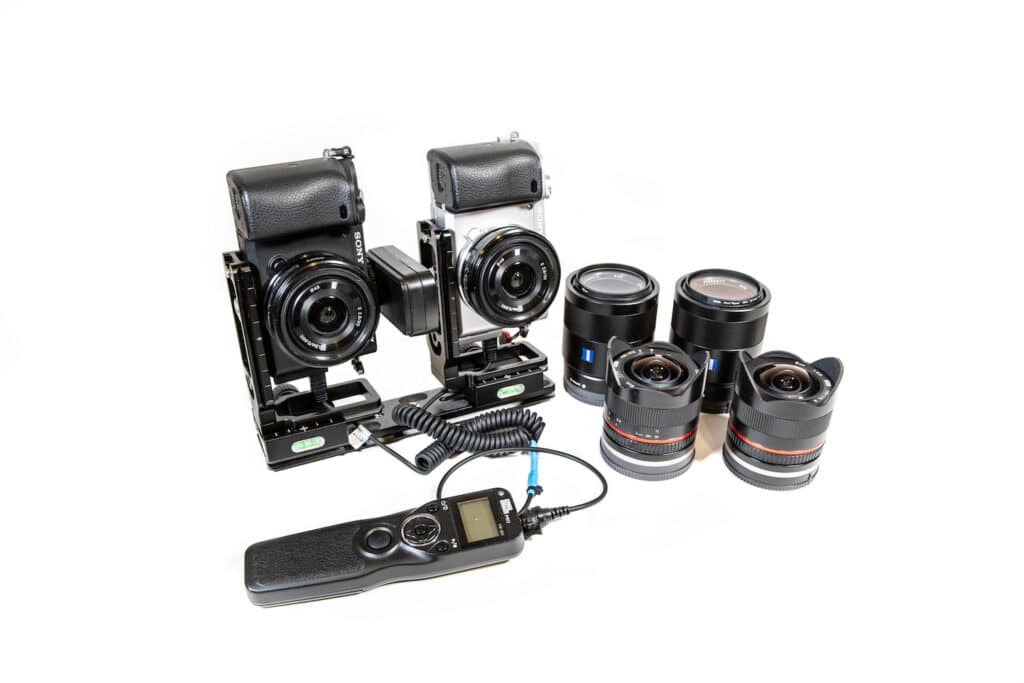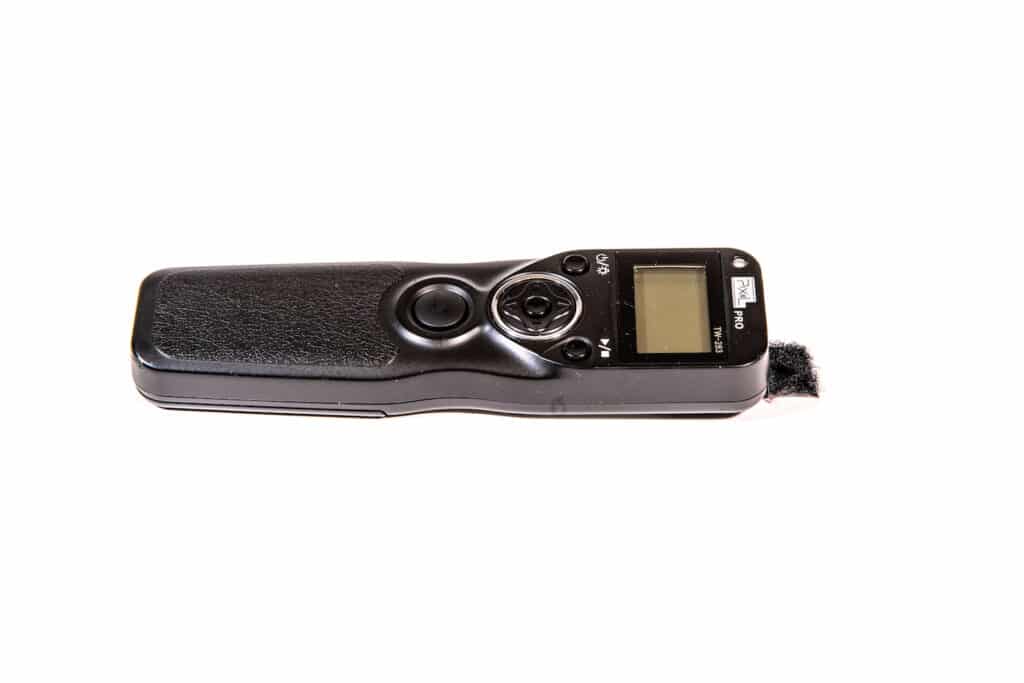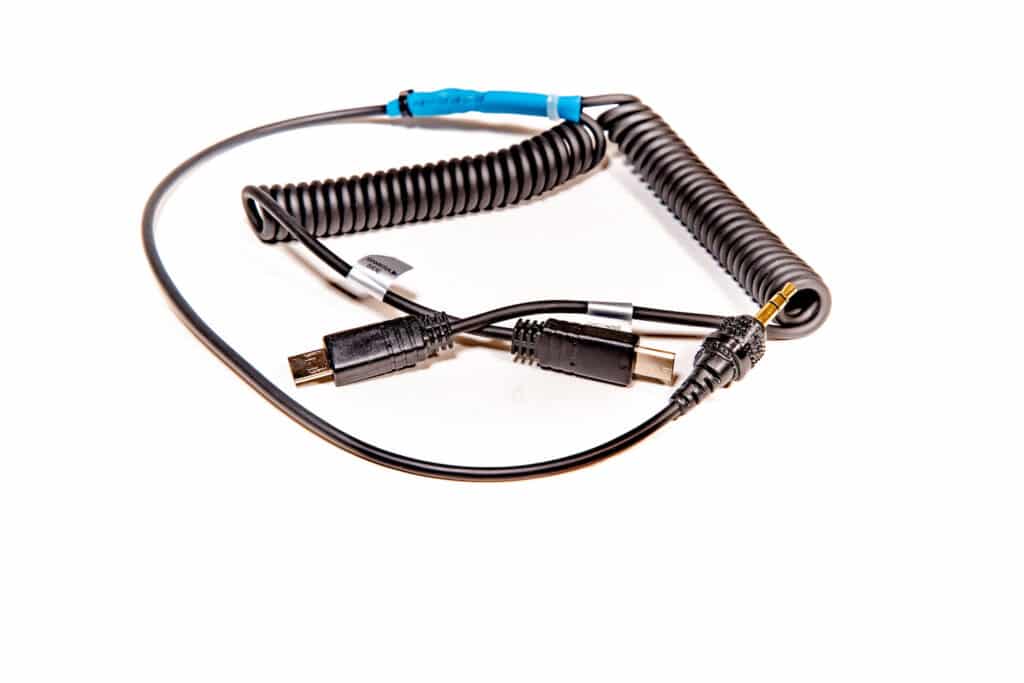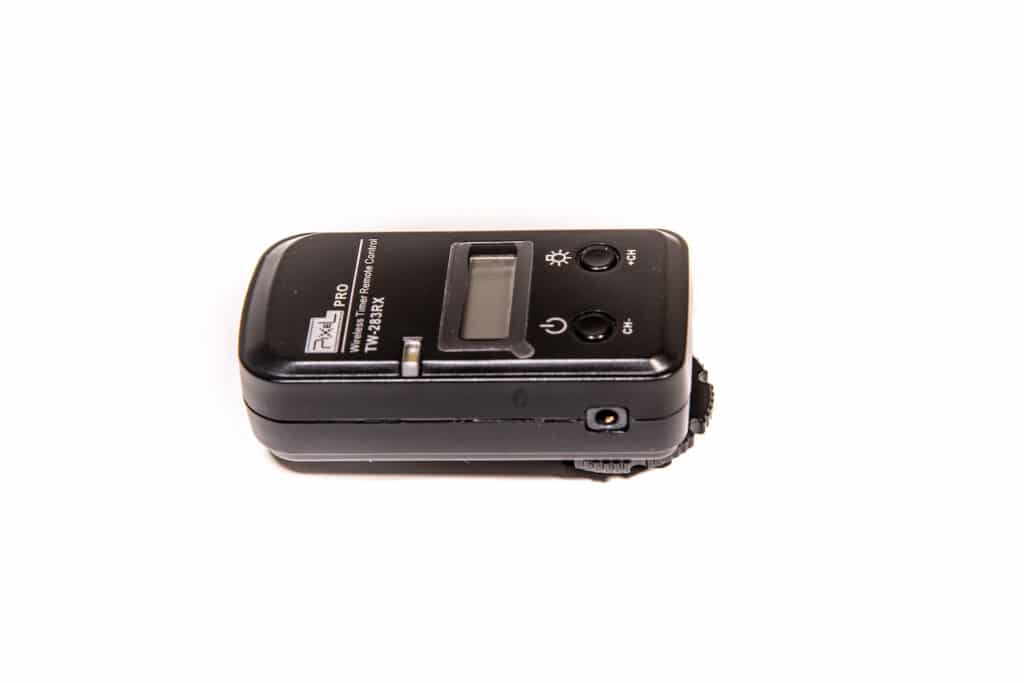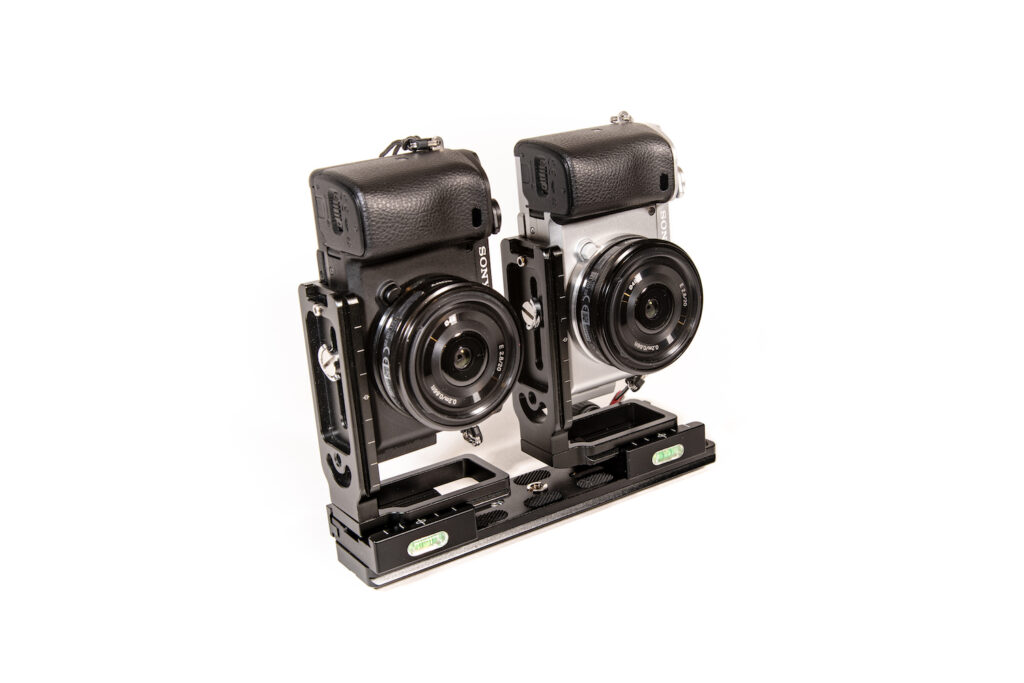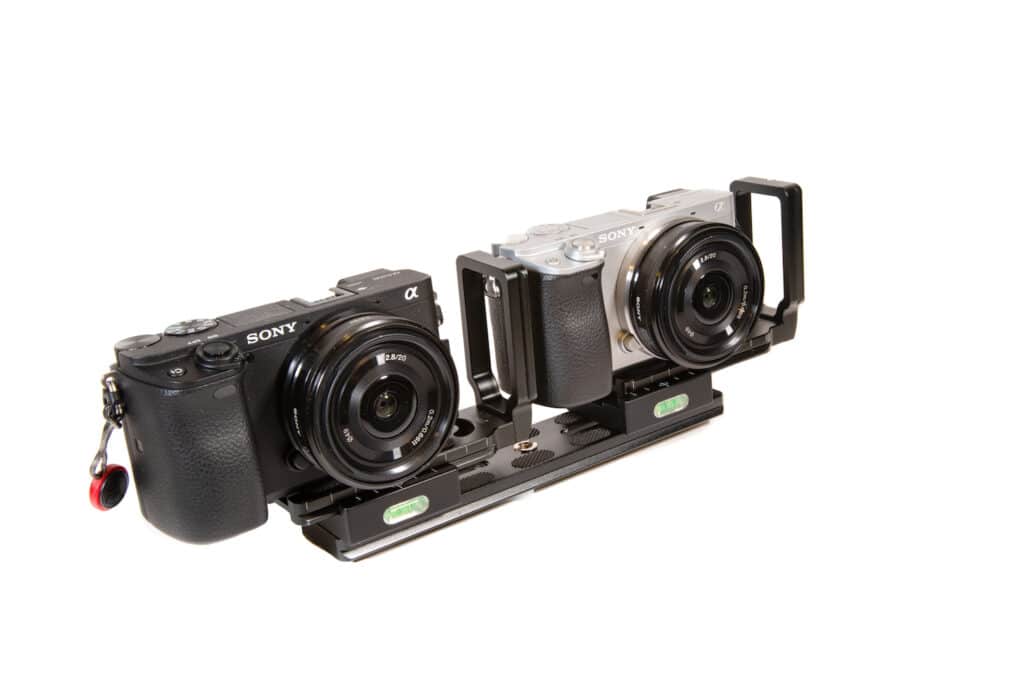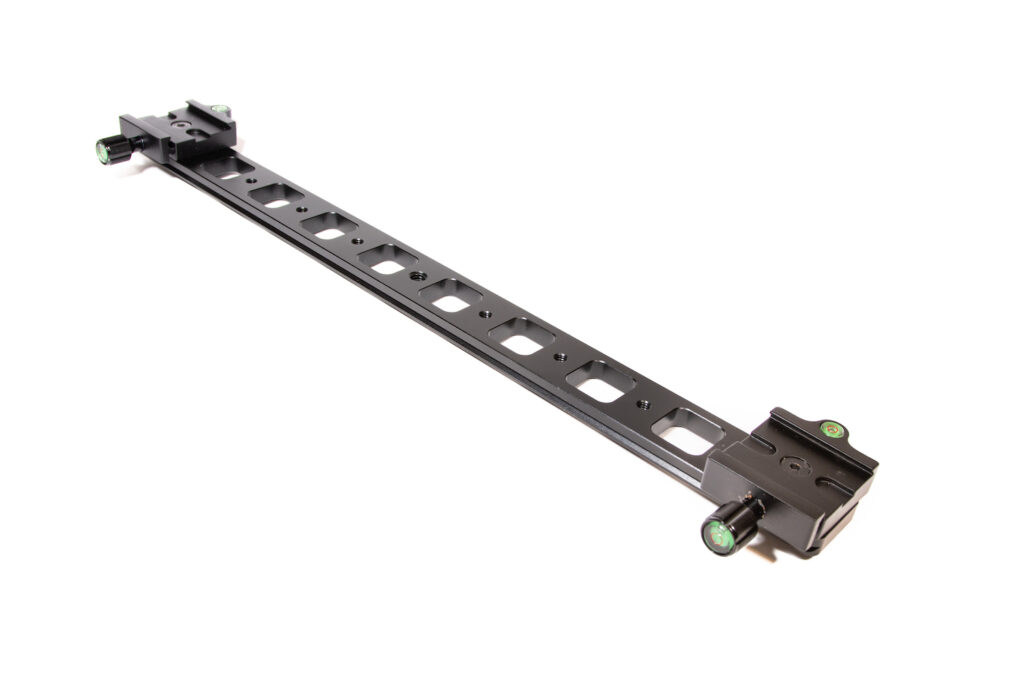Evolving to a twin camera set up
written for the stereosite by Graeme Barclay, Scotland
If you are already taking stereo pictures, well done! However, if you desire to broaden your horizons by capturing more challenging images, for example freezing motion, or creating dramatic landscapes, then a twin camera set up may be the answer.
Like many people I started in stereo photography with my cellular phone respectively one camera, taking sequential stereos. While this is adequate in many circumstances where there is no movement between the two frames, however it is limiting. For example, background movement, or water movement in rivers or the sea ruins stereo pictures taken using this method.
After three years of traditional photography and having the advantage of working alongside professional photographers, I soon realized I was looking to create high quality stereo images. To do this I required two cameras and a means to trigger them in sync. I also wanted the flexibility to have interchangeable lenses to enable a wide range of styles, which also provides the ability to add neutral density filters for long exposure photography.
Setting up
So now I have twin cameras. Ideally, two cameras exactly the same would be the best plan, however, I have a Sony A6300 and a Sony A6400. These work well together. I mounted these together on a 30cm plate. Next, I needed to find a way to link them together. Sony does make a sync a cable to link these cameras, so triggering one camera automatically triggers the other. While this does work, I also needed to trigger the cameras remotely removing any chance of camera shake. It is also much more convenient to be able to trigger the cameras from a distance without any trailing cable.
Remote control
I bought a wireless set up on Amazon as well as two additional cables. I cut off the original stereo jack plugs and soldered on an ordinary stereo jack cable I had. Connecting the third cable wasn’t as easy, as the colours of the wiring in this cable were different from the other two. I connected an old camera and started testing to see if this worked while keeping notes of the many failed attempts. I do not advise a trial and error of this type as it may damage your camera. It might be advisable to get cables of the same type so that the colours will probably match perfectly or to seek professional or advice from your camera manufacturer. At least, all this depends much from what cameras and what kind of remote control you include in the set up. So you might encounter something similar, hopefully you will not.
Finally, it all came together, and it was working! I could both focus with the half press and fire with the full press of the button. The electronic shutter release of this type is simple to use and has a positive distinction between focus and shutter release. Finally, this set up allows cable release as well as wireless release. Changing from cable to wireless could not be simpler. Removing the jack plug from the transmitter and connecting it to the receiver works perfectly. Instructions to pair the transmitter and receiver are provided and simple to follow.
Synchronisation
Now that it is all connected, how could I make sure it was really synchronized? I opened my laptop, searched for a stop clock and let it run, focusing both cameras on the screen and firing them. My first few attempts showed there was 1/20th sec of difference between both cameras. For my approach, this was unacceptable. This was not only due to my using two different camera models. I began scrolling through each of the camera menus, mirroring every setting until I was successful. Both cameras were syncing perfectly on single frame and single focus. However, I still can’t get these to sync in continuous focus setting, silent mode or in a burst of more than one frame.
Mounting the cameras
Connecting L brackets to cameras is extremely beneficial as this makes it easier to switch from portrait to landscape very quickly. Shooting in landscape will provide more flexibility when it comes to aligning images, especially for novices. My personal preference is shooting in portrait. At the point of shooting I am always very careful with framing, so I do not crop much of the picture in editing.
My most recent addition for stereo astro photography is a 600cm base plate, allowing a far wider base where there is no close foreground to enhance the stereo effect. Enlarging the baseline is also beneficial for landscape photography.
Advantages of twins
Whilst the cellular phone in many instances will take good quality stereo pictures, which is adequate for social media or website galleries, there are many distinct advantages of having a twin stereo set up for simultaneous stereo photos.
- Manual control of shutter speed, aperture, ISO and focus
- Aperture or shutter priority or full manual
- Freezing motion
- Controlling the depth of field
- Much larger file sizes suitable for projection
- Shooting in RAW files, allowing deeper post editing
- Multiple lenses, from telephoto to super fisheye wide angle
- Able to use Neutral density filters enabling very long exposures
- Gradient filters for when the sky is too bright
- Connecting to an external flash
All that said, I am no way dismissing the unique flexibility of shooting stereo using the cellular phone. Its cameras are continuing to improve. Your phone is always with you. There are many apps for aligning and editing stereo images, the screen size allows for instant free-viewing, and posting on social media is extremely quick and easy.
Graeme Barclay (Edinburgh, Scotland)
At this point, I’ve been taking digital photographs for a little over three years and stereo photography for around six months. I’m employed within the financial sector but have had many years experience in hydraulic engineering and overcoming technical issues.
Instagram-profile: mystereopics

